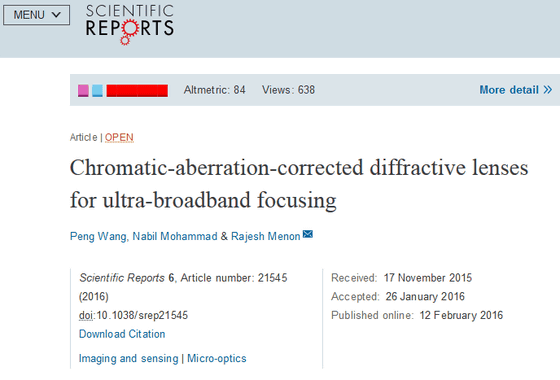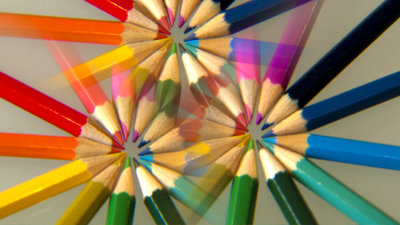Succeeded in developing thin lenses "one-tenth of hair", the possibility that smartphones, digital cameras and glasses will change dramatically

By University of Utah College of Engineering
The team of Professor Rajesh Menon of Utah University (Electrical and Computer Engineering) etc. succeeded in developing a flat lens which is much thinner than the lens of the camera currently used and is one tenth of the thinness of human hair Did.
Chromatic-aberration-corrected diffractive lenses for ultra-broadband focusing: Scientific Reports
http://www.nature.com/articles/srep21545

New lens ready for its close-up | EurekAlert! Science News
http://www.eurekalert.org/pub_releases/2016-02/uou-nlr021116.php
Lens 10x thinner than human hair can revolutionize smartphones, cameras, eyeglasses - RT News
https://www.rt.com/news/332438-thin-lens-cameras-smartphones/
It is common knowledge that it is impossible to create "extremely thin optical lenses on the plane" because the colors bend at different angles when light passes through the lens. However, Professor Mennon et al. Made a discovery that overturns this common sense with a paper entitled "Chromatic-aberration-corrected diffractive lenses for ultra-broadband focusing" published in Scientific Reports, published February 12th (Friday).
According to the paper, the idea that a planar diffractive lens can not modify all colors at the same time is a mistake.
Based on the assumption that lenses of camera lenses commonly used at present have different proportions of bending depending on color, light is concentrated on one point by combining several convex and concave lenses. this is"refractionIt is what used it.
Meanwhile, Professor Menon focused on the phenomenon that the waves went around behind the obstacles when the waves hit an obstacle · phenomena transmitted "diffraction"is. In nature, the colorful butterfly feathers and the rainbow of the seven colors are visible by diffraction. Therefore, by providing a microstructure in the lens, by utilizing the diffraction of light, different colors are gathered at the same point.

ByMoyan Brenn
If the lens made in this way is "Super achromatic lens", Realizing the thinness of one-tenth of the human hair. Although it is said that the material is OK with any transparent material such as glass or plastic, it is necessary to calculate the coupling structure of the lens so that different colors are gathered at one point using a specific algorithm, so it is easy to produce It seems not to be.
However, being able to make flat / ultrathin lenses is a gospel for smartphones and cameras aiming for a body as small as possible, and it is also expected to be of great use in medical instruments. Professor Menon and others are aiming for realization within five years.
Related Posts:
in Science, Posted by logc_nt






